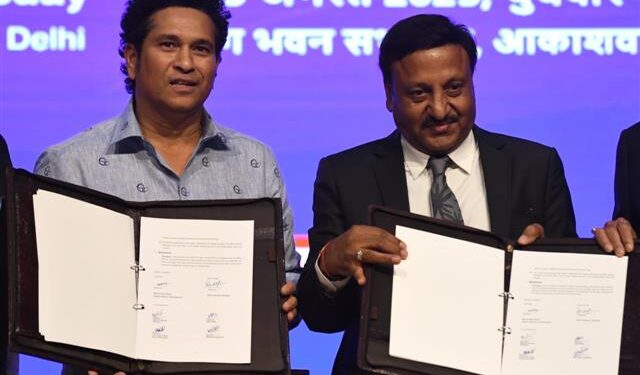Sachin Tendulkar, the ex-Indian cricketer, has recently exposed a fabricated video circulating on social media platforms. This video has been manipulated to deceive viewers into believing that Tendulkar is endorsing an online game. In the edited footage, Tendulkar can be seen promoting the game by sharing an anecdote about his daughter, Sara, who supposedly earns Rs 1.8 lakh per day through predictions in the game. Unfortunately, Tendulkar has fallen prey to identity theft through the utilization of deepfake technology, joining the growing list of victims.
Following the emergence of the video, Tendulkar took to his social media platform to address the situation, emphasizing that he had no involvement in the aforementioned clip and that it had been manipulated. The esteemed cricketer expressed his concern over the widespread misuse of technology, stating that it had greatly disturbed him. Additionally, he made an appeal to halt the dissemination of misinformation and deepfakes, urging individuals to exercise greater vigilance and caution.
Sachin Tendulkar has become the most recent target of the misuse of deepfake technology, following in the footsteps of Bollywood actor Rashmika Mandhana. The Delhi Police acted swiftly against the individuals responsible for sharing the fabricated video of the actor on social media.
Deepfakes, which combine “deep learning” and “fake,” refer to highly realistic video or audio recordings created using artificial intelligence. These manipulated media can portray individuals saying or doing things they never actually did, giving rise to numerous ethical and societal concerns.
The potential for harm is extensive, ranging from personal attacks to the dissemination of misinformation that could undermine political processes, incite violence, or even trigger international incidents. Despite the emergence of laws and technological defenses, the rapid progress and accessibility of deepfake technology present a significant challenge in terms of detection and regulation.
As deepfakes blur the boundaries between reality and fiction, they pose a grave threat to the integrity of information, personal reputations, and democratic institutions worldwide.


